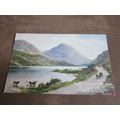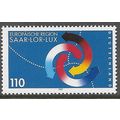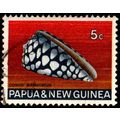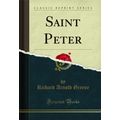St. Margaret's at Cliffe, Kent - South Foreland Lighthouse from air - postcard
- Condition : Used
- Dispatch : 2 Days
- Brand : None
- ID# : 189457318
- Quantity : 1 item
- Views : 131
- Location : United Kingdom

- Seller : justthebook (+1695)
- Barcode : None
- Start : Sat 22 Feb 2020 11:53:02 (BST)
- Close : Run Until Sold
- Remain : Run Until Sold
More Listings from This Seller view all
Seller's Description
- Postcard
- Picture / Image: "White Cliffs of Dover" - South Foreland Lighthouse in the Foreground with the port beyong - nice aerial view
- Publisher: National Trust
- Postally used: no
- Stamp: n/a
- Postmark(s): n/a
- Sent to: n/a
- Notes / condition:
Please ask if you need any other information and I will do the best I can to answer.
Image may be low res for illustrative purposes - if you need a higher definition image then please contact me and I may be able to send one. No cards have been trimmed (unless stated).
------------------------------------------------
Postage & Packing:
Postage and packing charge should be showing for your location (contact if not sure).
No additional charges for more than one postcard. You can buy as many postcards from me as you like and you will just pay the fee above once. Please wait for combined invoice. (If buying postcards with other things such as books, please contact or wait for invoice before paying).
Payment Methods:
UK - PayPal, Cheque (from UK bank) or postal order
Outside UK: PayPal ONLY (unless otherwise stated) please. NO non-UK currency checks or money orders (sorry).
NOTE: All postcards are sent in brand new stiffened envelopes which I have bought for the task. These are specially made to protect postcards and you may be able to re-use them. In addition there are other costs to sending so the above charge is not just for the stamp!
I will give a full refund if you are not fully satisfied with the postcard.
----------------------------------------------
Text from the free encyclopedia WIKIPEDIA may appear below to give a little background information (internal links may not work) :
*************
South Foreland Lighthouse is a Victorian lighthouse on the South Foreland in St. Margaret's Bay, Dover, Kent, England, used to warn ships approaching the nearby Goodwin Sands. It went out of service in 1988 and is currently owned by the National Trust. Another lighthouse had previously stood on the site since at least 1730 and during most of this time it was manned by the Knott family of lighthouse keepers.
South Foreland was the first lighthouse to use an electric light. This was in 1859. By 1875 the lighthouse was using carbon arc lamps powered by a steam-driven magneto.[1]
It was used by Guglielmo Marconi during his work on radio waves, receiving the first ship-to-shore message from the East Goodwin lightship. The system was used over the following winter to avert several shipwrecks. In 1899, the first international transmission was made between the lighthouse and Wimereux in France.[2]
Originally, there was another lighthouse further down towards the cliff edge to give a bearing on the leading lights principle when a ship was at the point where it could safely turn left into the Downs behind the sands or right to go safely around the Sands. They were both built in the 1840s. However, the Sands shifted over the following years until this bearing became dangerously inaccurate and so the lower light was taken out of service in 1910. It still survives as part of a private garden but is under threat from cliff erosion.
The destruction of Trinity House records during the last war has prompted considerable conjecture about this lighthouse's history because other source material is hard to find. Whilst beacons or votive lights may have existed from early times one of the first reliable references is found the Penny Magazine 19th Sept. 1835, pp365, and states that Charles I granted letters-patent to 'continue and renew' the lighthouses at the North and South Forelands to Sir John Meldrum. Presumably, a record exists, somewhere of an earlier bequest.
It is a fact that two lighthouses still stand here, but it is by no means certain why they were built. The popular leading lights theory lacks conviction, since turning to port or starboard upon lining up the two lights would not automatically lead to safe passage unless the navigator knew precisely how far the ship was from land. A stronger argument seems to be that ships coming from the north might line up the lights in order to determine when it was safe to turn in for Dover Harbour. Seamen sailing up the channel might use these lights, not as leading lights (as popular opinion has it), but simply as lights in transit when another bearing is needed to confirm position. It is also uncertain why two lights were built in 1840 to give a lead when a Trinity House lightship had been stationed at the South Sands Head since 1832 precisely for that purpose. Lieutenant John Hay (British Channel Piloting, 1850) lists many bearings in the Downs using churches, buildings, mills, castles, and the upper South Foreland lighthouse, but makes no mention of one using both South Foreland lighthouses. Greg Holyoake, in his book Deal:All in the Downs, in a seemingly well-researched chapter on lighthouses and lightships (p. 100) says two lighthouses were first built at the South Foreland to distinguish it from the North Foreland. He also suggests the two lights served as a transit. Elsewhere,(vide) the authoritative and comprehensive website: www.pharology.eu says;"...since one light could be confused with another just along the coast it became necessary to make one light distinguishable from another. This was achieved by having two lights at the South Foreland whilst only one was shown at the North Foreland."
Charts as far back as the 17th century show that the cyclic movement of the Sands was known. Although the chart of Robert Jager, 1629, (Shipwrecks of the Goodwin Sands, R & B Larne) may leave something to be desired in accuracy of the coastline, it seems to suggest that the South Sand Head was farther south than it was in the next century and that the Head was turning back upon itself in cyclic movement. Early in the eighteenth century the South Sand Head was still so far south that the chart of Charles Labelye,1736,(Public Records Office)shows a number of bearings, one of which runs through the two lighthouses then in existence and unmistakably strikes the Head. Richard Larne (Shipwrecks of the Goodwin Sands) estimates the increase/decrease at 4000 feet a century. It would seem to have been a foolish act to build two lighthouses to cover a bearing that so soon would be useless even if new sites were selected. Less widely known is the fact that a lightship of sorts is said to have been stationed at the South Sands Head since Elizabethan times for the express purpose of guiding the fleet into the anchorage of the Downs, although evidence for this assertion is slim. How effective a primitive light vessel may have been is a matter of speculation.
We know, also, that multiple lights were a feature of many locations before occulting lights arrived to give a station clear identity at night. The Cornwall Tourist Board website says: "Trinity House built a two coal fired station (at the Lizard)... The signal continued as two fixed lights until 1903... in 1903 the two tower system was stopped and a single flashing light used."
The presence of two lights at the South Foreland distinguished it from its close neighbour at the North Foreland. A rotating mechanism, that presumably allowed the light to occult, was installed in 1904. Shortly afterwards (1910) the second lighthouse was taken out of service.
There is also a twin lighthouse at the North Foreland, on the coast at Broadstairs, and still in operation (though automated).
Listing Information
| Listing Type | Gallery Listing |
| Listing ID# | 189457318 |
| Start Time | Sat 22 Feb 2020 11:53:02 (BST) |
| Close Time | Run Until Sold |
| Starting Bid | Fixed Price (no bidding) |
| Item Condition | Used |
| Bids | 0 |
| Views | 131 |
| Dispatch Time | 2 Days |
| Quantity | 1 |
| Location | United Kingdom |
| Auto Extend | No |




 for 1 item(s)
for 1 item(s)
















